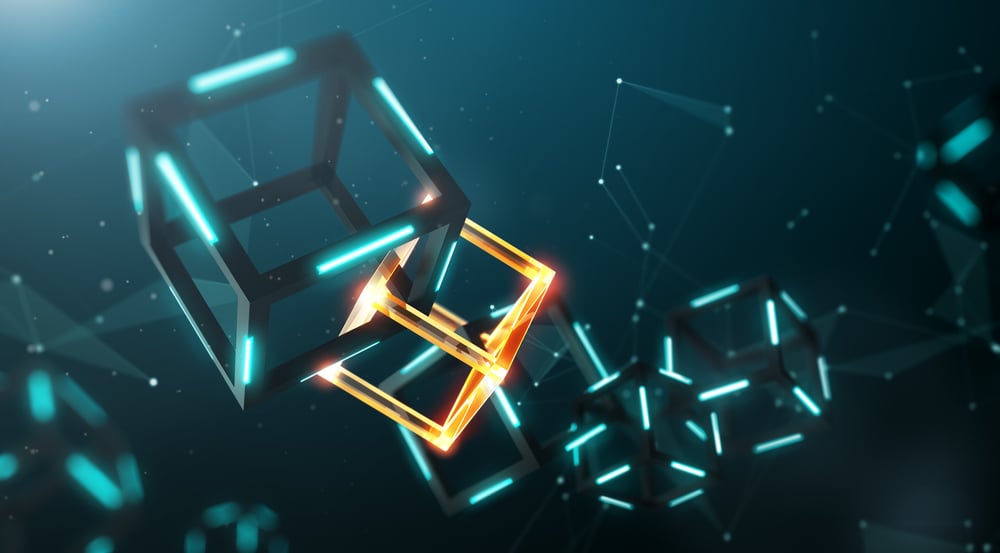The inception of blockchain technology is in many ways like the beginning days of the Internet. It is an innovative solution to a number of issues many industries, such as financial, logistics, retail, marketing, and more. Like most new innovative technologies, it can be challenging to really wrap your head around.
Blockchain technology began with the creation of Bitcoin by Satoshi Nakamoto. Since that moment, blockchain technology and cryptocurrency has become much more. From tracking transactions to securing smart contracts, blockchain continues to become a powerful utility.
“With blockchain, we can imagine a world in which contracts are embedded in digital code and stored in transparent, shared databases, where they are protected from deletion, tampering, and revision,” according to Harvard Business Review. “In this world every agreement, every process, every task, and every payment would have a digital record and signature that could be identified, validated, stored, and shared.”
To make sense of all things blockchain, let’s take a deeper look at how blockchain technology works. Let’s dive in!
Main Technologies Blockchain Serves Up
There are three essential technologies blockchain provides. Each technology serves a purpose for multiple industries. These include, cryptography/encryption, shared decentralized distributed network/ledger, and the recording and security of transactions created on the blockchain.
Cryptography/Encryption for Blockchain Users
This aspect of how blockchain technology works is all about securing digital identity. This digital identity of a person using blockchain for any number of reasons, like a transaction for instance is based on having both private and public cryptographic keys for that specific transaction.
You can think of these cryptographic/encryption keys like a highly secured digital signature. This gives you ownership over the transaction, smart contract, or other utility via blockchain technology.
For example, if you want to create a transaction with someone via blockchain, each transaction will have a private (encrypted) key and public key created and distributed to each party of the transaction.
No one else outside of the parties who hold the public and private keys can access, change, or see the transaction. This is what makes everything processed on the blockchain more secure and verifies identity as well.
Secured Decentralized Network and Distributed Ledger
What is a distributed network/ledger? Essentially, a distributed ledger is a database that users of a decentralized network share. The ledger is an important part of the blockchain, since it is where transactions are recorded, encrypted, and secured.
Those using the decentralized network where these distributed ledgers are digitally housed are the only ones with access. There is no third-party or middlemen oversight, like financial institutions, governments, or clearinghouses.
Each ledger in the decentralized network has a designated time stamp and cryptographic signature, as explained in the above section. Blockchain ledgers represent immutable history of all transactions within a decentralized network.
This is what makes blockchain technology unique and innovative, rendering traditional transaction recording and actions archaic. The oversight is removed, thus making processes faster, far more secure, and scalable.

Blockchain Technology in Action
To illustrate how the above key aspects of blockchain technology work, the action, let’s take a look at a simple transaction between two individuals. Let’s say that Person A (located in the US) wants to purchase a product from Person B (located in Canada).
When Person A purchases a product from Person B, they add a cryptographic key (Person A) to a public key (Person B). This is done on the blockchain, and no one can alter or serve as oversight, besides Person A and Person B, since they are the only two with the encryption keys for that specific transaction.
When this transaction is created (a block) on the chain (ledger on a decentralized network) information about the transaction is attached to the purchase and it is secured. The information attached is an “If” and “Then” mathematical equation based on a defined set of rules Person A and Person B agree on.
For instance, Person A is paying $100 for Person B’s product. The rules are that the product must meet the expectations of Person A before the $100 is deposited into Person B’s digital wallet. If = expectations and Then = deposit of money. It really is that simple on the surface.
Going one step further, Person B mitigates risk of consumer fraud, since blockchain technology can verify the identity of Person A and available funds instantly. Plus once a transaction is completed on the blockchain, it is final and the transaction details (block) remain recorded within the ledger and network (chain) forever.
There are also no international transaction fees or political bottlenecks, like those that exist in current financial models. This simple example applies to a number of processes, from health care to supply chain management. The process is similar, but more technical “behind the scenes” actions do take place in some instances.
In Conclusion
Blockchain technology is set to redefine how multiple industries do business. It’s an innovation that can streamline processes at the corporate level, as well as processes for small businesses and individuals. Blockchain is also more secure than traditional system, making it an enticing way to mitigate risk for businesses. How do you see blockchain technology impacting the future?



